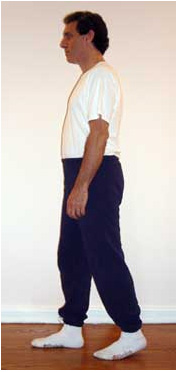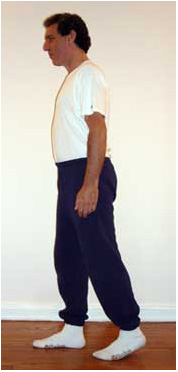Unlike in sitting and standing, where habit has us tending to commit weight backwards, in walking, since we have a forward destination, we tend to commit our weight too far forward. (This is so even though the upper torso may be leaning backwards, a remnant of our sitting-back habit.)
To walk, we need forward momentum. Without it, we could not move forward at all. But too much forward momentum causes problems. We cannot simply build up momentum and keep building it, like when a ball rolls down a hill. At each moment in the walking cycle, we are also acting to maintain uprightness. In other words, we are lifting ourselves vertically, while simultaneously moving horizontally. To lift ourselves effectively, this forward momentum we build up has to be slowed. To slow it optimally, we need to commit our weight straight down into the ground-contact-point that is directly underneath us at any particular moment. When our 'swinging foot' first makes ground contact, this is the pivot point on the heel, the heel's lowest point. Committing weight forward of initial heel contact makes slowing down a lot more strenuous. Large leg, torso and neck muscles must be recruited to do the work.

